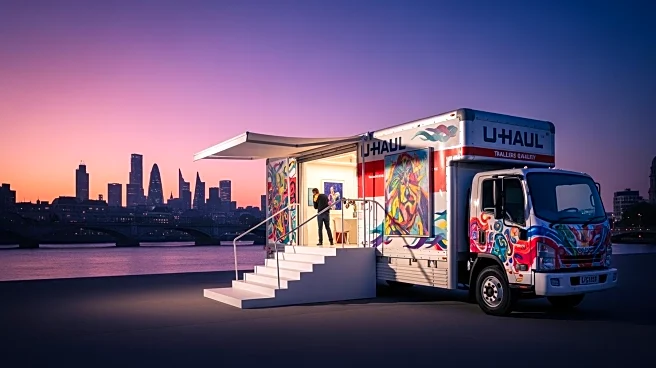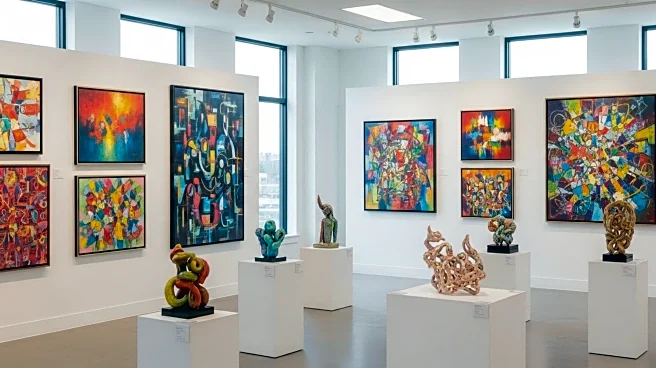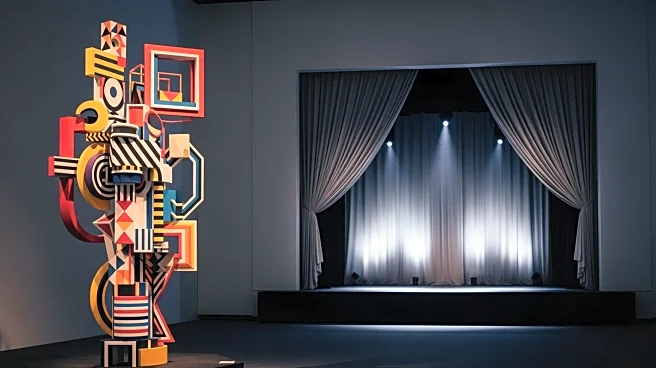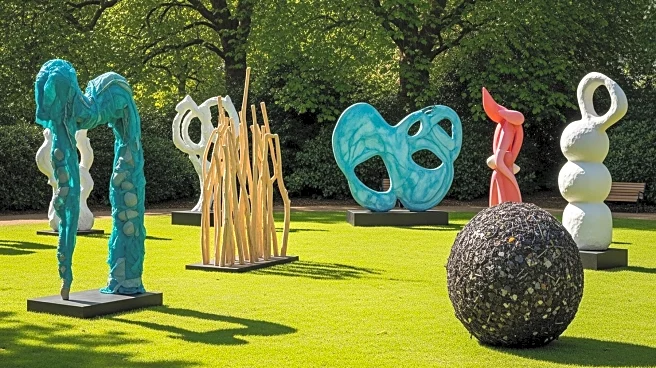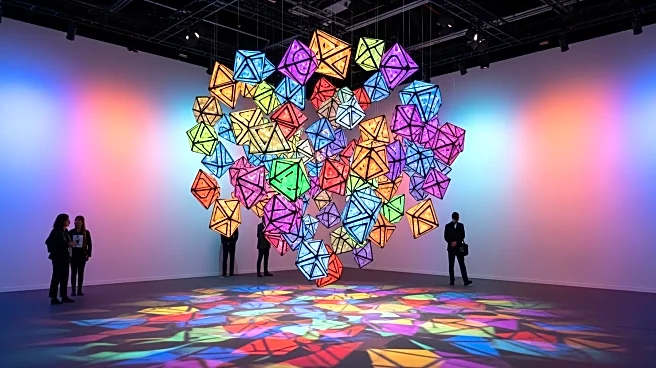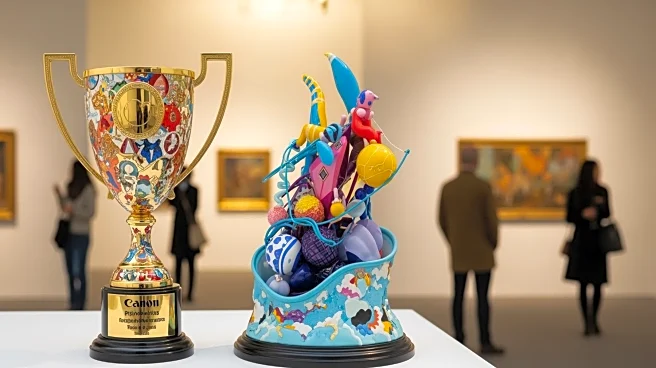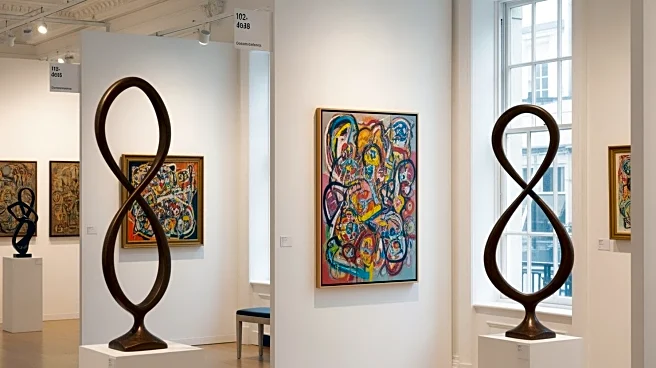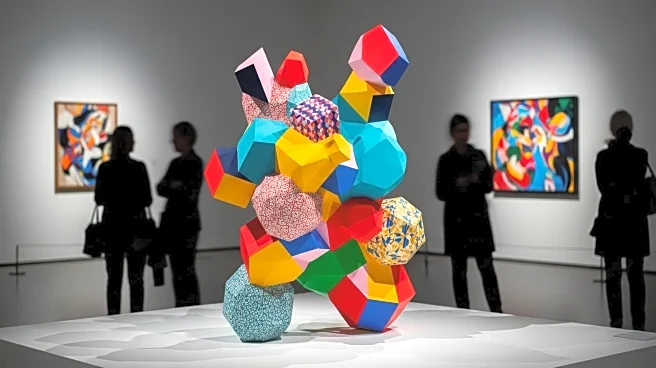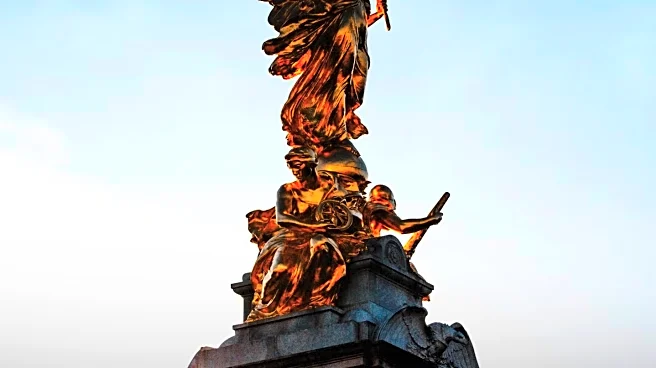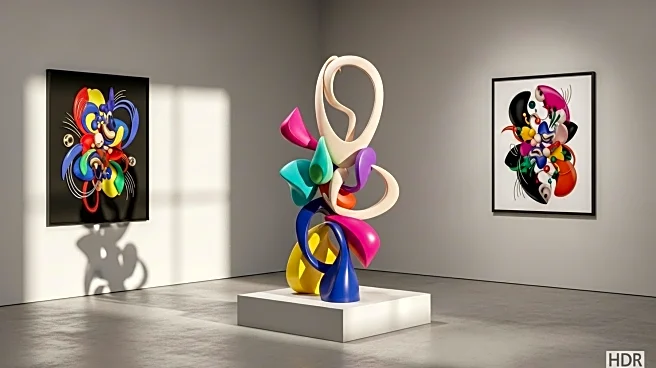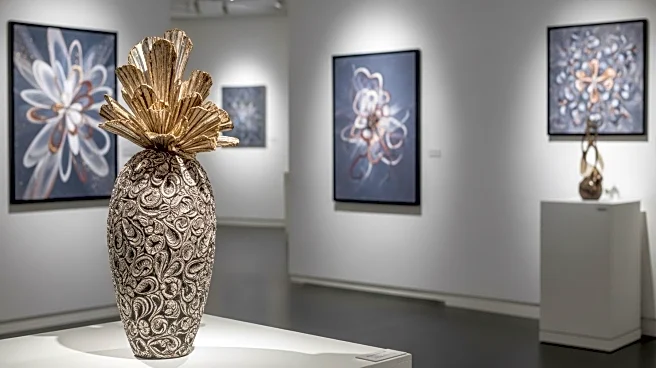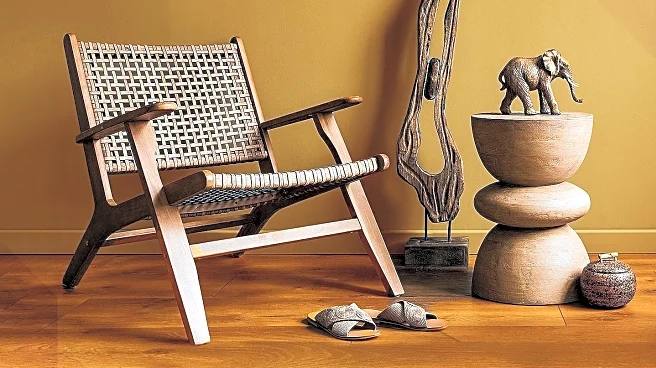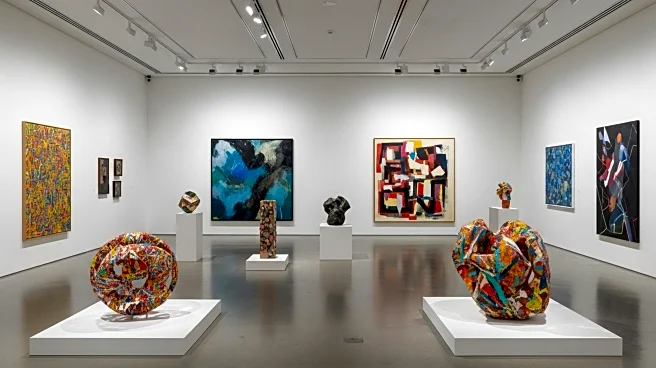What's Happening?
U-Haul Gallery, a unique art initiative founded by James Sundquist and Jack Chase, has brought its mobile exhibition concept to Frieze London. The gallery operates by renting U-Haul trucks and converting them into temporary art spaces, allowing passers-by
to view and purchase art directly from the street. This week, the gallery showcased works by artist Vladimir Umanetz, including a portrait of Tina Turner, priced at £10,000, and a mixed-media collaboration with Hikari Hamada, priced at £11,000. The initiative aims to provide affordable exhibition space for artists, with the truck rental costing £750. Despite warnings from park wardens, the gallery continues to attract attention and engage the public with its unconventional approach.
Why It's Important?
The U-Haul Gallery's approach challenges traditional art exhibition models by democratizing access to art and reducing costs for artists. This initiative could influence how art is presented and sold, potentially lowering barriers for emerging artists who struggle with high gallery fees. By bringing art directly to the streets, the gallery fosters direct engagement with the public, which may lead to increased interest and sales. This model also highlights the potential for innovative uses of urban spaces, encouraging other artists and galleries to explore similar methods to reach broader audiences.
What's Next?
As the U-Haul Gallery continues to operate, it may inspire other artists and galleries to adopt similar mobile exhibition strategies. The success of this initiative at Frieze London could lead to its expansion to other major art fairs and cities, further disrupting traditional gallery models. Stakeholders in the art industry, including gallery owners and artists, may need to consider how such innovations impact their business models and audience engagement strategies.
Beyond the Headlines
The U-Haul Gallery's approach raises questions about the accessibility and commercialization of art. By bypassing traditional gallery spaces, the initiative challenges the exclusivity often associated with art exhibitions. This could lead to broader discussions on how art is valued and consumed, potentially shifting cultural perceptions and encouraging more inclusive practices within the art world.
